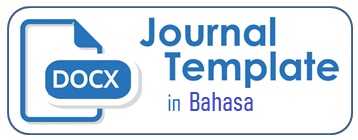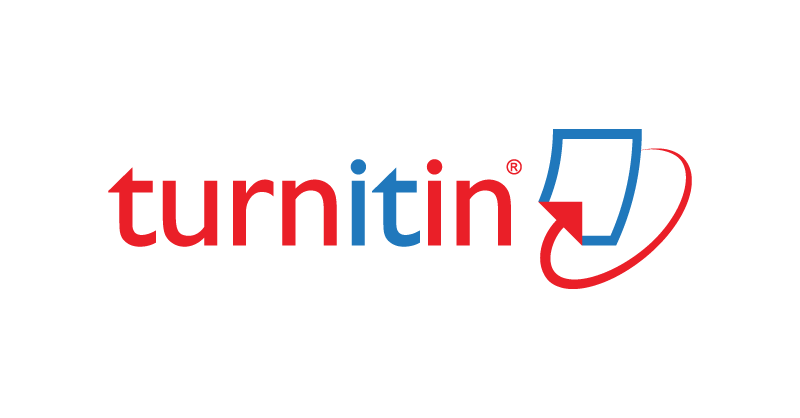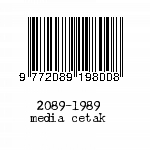Program Keluarga Harapan: Can It Reduce Poverty and Increase Welfare in Indonesia? Household Level Evidence from Districts/Cities in Indonesia on 2019
Abstract
Poverty is a multidimensional phenomenon which is a major challenge in all countries. To reduce poverty and improve welfare, government intervention programs are needed. Conditional cash transfer programs are widely implemented in several countries. In Indonesia, there is Program Keluarga Harapan (PKH). This program has many debates as an anti-poverty program. This research looks at the effect of PKH on poverty and welfare in Indonesia. It used the 2019 Susenas raw data and analyzed by SEM-PLS method. The findings showed that PKH had a negative-significant effect on poverty and a positive-significant effect on welfare in Indonesia. In addition, poverty has a negative and significant effect on welfare in Indonesia. The research results are expected to be input for the central and regional governments in making policies for the sustainability of PKH implementation in reducing poverty and increasing welfare.
References
Alkire, S., Conconi, A., Robles, G., & Seth, S. (2015). Multidimensional poverty index - Winter 2014/2015: Brief methodological note and results. OPHI Briefing (MPI Methodological Note), 27. https://www.ophi.org.uk/wp-content/uploads/Global-MPI-2014-Brief-Methodological-Note-and-Results.pdf.
Badan Pusat Statistik. (2020a). Pada tahun 2019, indeks pembangunan manusia (IPM) Sumatera Barat mencapai 72,39. Berita Resmi Statistik, edisi 02 Maret 2020. https://sumbar.bps.go.id/pressrelease/2020/03/02/812/pada-tahun-2019-indeks-pembangunan-manusia-ipm-sumatera-barat-mencapai-72-39.html.
Badan Pusat Statistik. (2020b). Persentase penduduk miskin September 2019 turun menjadi 9,22 persen. Berita Resmi Statistik, edisi 15 Januari 2020. https://www.bps.go.id/pressrelease/2020/01/15/1743/persentase-penduduk-miskin-september-2019-turun-menjadi-9-22-persen.html.
Becker, G. (2009). Human capital: A theoritical and empirical analysis, with special reference to education (3rd Eds.). University of Chicago Press.
Borga, L. G., & D’Ambrosio, C. (2021). Social protection and multidimensional poverty: Lessons from Ethiopia, India and Peru. World Development, 147(4), 105634. https://doi.org/10.1016/j.worlddev.2021.105634.
Bourguignon, F., Ferreira, F. H. G., & Leite, P. G. (2003). Conditional cash transfers, schooling, and child labor: Micro-simulating Brazil’s Bolsa Escola program. World Bank Economic Review, 17(2), 229–254. https://doi.org/10.1093/wber/lhg018.
Cahyadi, N., Hanna, R., Olken, B. A., Prima, R. A., Satriawan, E., & Syamsulhakim, E. (2020). Cumulative impacts of conditional cash transfer programs: Experimental evidence from Indonesia. American Economic Journal: Economic Policy, 12(4), 88–110. https://doi.org/10.1257/pol.20190245.
Chin, W. W. (2010). How to write up and report PLS analyses. In: Esposito Vinzi, V., Chin, W., Henseler, J., Wang, H. (eds) Handbook of Partial Least Squares. Springer Handbooks of Computational Statistics. Springer.
Debowicz, D., & Golan, J. (2014). The impact of oportunidades on human capital and income distribution in Mexico: A top-down/bottom-up approach. Journal of Policy Modeling, 36(1), 24–42. https://doi.org/10.1016/j.jpolmod.2013.10.014.
Delgado, O. A. S., Kadelbach, V., & Mata, L. M. (2018). Effects of conditional cash transfers (CCT) in anti-poverty programs. An empirical approach with panel data for the Mexican case of prospera-oportunidades (2002-2012). Economies, 6(2), 29-41. https://doi.org/10.3390/economies6020029.
Dimova, R., & Wolff, F. C. (2008). Are private transfers poverty and inequality reducing? Household level evidence from Bulgaria. Journal of Comparative Economics, 36(4), 584–598. https://doi.org/10.1016/j.jce.2008.05.002.
Fernald, L. C., Gertler, P. J., & Neufeld, L. M. (2008). Role of cash in conditional cash transfer programmes for child health, growth, and development: An analysis of Mexico’s Oportunidades. The Lancet, 371(9615), 828–837. https://doi.org/10.1016/S0140-6736(08)60382-7.
García, S., Harker, A., & Cuartas, J. (2019). Building dreams: The short-term impacts of a conditional cash transfer program on aspirations for higher education. International Journal of Educational Development, 64(December), 48–57. https://doi.org/10.1016/j.ijedudev.2018.12.006.
Ghozali, I., & Latan, H. (2015). Partial least squares, konsep, teknik dan aplikasi menggunakan program Smartpls 3.0 untuk penelitian empiris. Badan Penerbit UNDIP.
Giang, L. T., & Nguyen, C. V. (2017). How would cash transfers improve child welfare in Viet Nam? Children and Youth Services Review, 82(November), 87–98. https://doi.org/10.1016/j.childyouth.2017.09.003.
Goldin, C. (2016). Human capital. Handbook of Cliometrics. Springer Verlag.
Ilemona, A., Akoji, O., & Matthew, A. (2013). Alleviating poverty through the use of entrepreneurship skill acquisition in Kogi State, Nigeria. Aceh International Journal of Social Sciences, 2(1), 1–10. https://doi.org/10.12345/aijss.2.1.1358.
Hair, J. F. Jr., Hult, G. T. M., Ringle, C. M., & Sarstedt, M. (2015). A primer on partial least squares structural equation modeling (PLS-SEM). SAGE Publications Inc.
Kamarni, N., Anshori, M., & Sukmana, R. (2019). Poverty alleviation through social capital in coastal areas: Pariaman coastal case. Journal of Innovation in Business and Economics, 3(01), 1-10. https://doi.org/10.22219/jibe.v3i01.7561.
Kementerian Sosial. (2019). Pedoman Pelaksanaan Program Keluarga Harapan Tahun 2019. kemensos.go.id. https://kemensos.go.id/uploads/topics/16202973084877.pdf.
Khomaini, A. A. (2020). Dampak program bantuan tunai (Cash transfer) terhadap kesejahteraan subyektif di Indonesia. Indonesian Treasury Review Jurnal Perbendaharaan Keuangan Negara Dan Kebijakan Publik, 5(1), 1–16. https://doi.org/10.33105/itrev.v5i1.161.
Musa, W., Ibrahim, A. Z. B, & Zan, Z. B. M. (2019). An assessment of the impact of government intervention programs on poverty alleviation in Nigeria. International Journal of Economics, Commerce and Management, VII(1), 147-160. https://ijecm.co.uk/wp-content/uploads/2019/01/7110.pdf.
Nainggolan, T., Sutaat, Sitepu, A., Padmi, T. A., Muchtar, Irmayani, & Hutapea, B. (2012). Program keluarga harapan di Indonesia: Dampak pada rumah tangga sangat miskin di tujuh provinsi. P3KS Press.
Patel-Campillo, A., & García, V. B. S. (2022). Breaking the poverty cycle? Conditional cash transfers and higher education attainment. International Journal of Educational Development, 92(July), 102612, 1-11. https://doi.org/10.1016/j.ijedudev.2022.102612.
Permana, A. C., Sasmito, C., & Gunawan, C. I. (2018). Implementasi program keluarga harapan untuk memutus rantai kemiskinan di Kota Malang (Studi di Kecamatan Lowokwaru Kota Malang). Jurnal Politik Dan Sosial Kemasyarakatan, 10(2), 64–74. https://doi.org/10.52166/madani.v10i2.1054.
Roidah, I. (2016). Evaluasi kebijakan pengentasan kemiskinan dalam program keluarga harapan di Kecamatan Rejotangan Kabupaten Tulungagung. Jurnal AGRIBIS, 4(1), 39–47, https://journal.unita.ac.id/index.php/agribisnis/article/view/113.
Setiadi, & Maisah, I. A. (2018). The benefits of conditional cash transfers: Learning from the recipients of PKH aid in Alor, East Nusa Tenggara. Komunitas: International Journal of Indonesian Society and Culture, 10(2), 189–205. https://doi.org/10.15294/komunitas.v10i2.16182.
Sihite, L., Daulay, M., Lubis, I., & Parinduri, R. E. (2019). The effect of village funds, human development index (HDI), and economic growth on decrease of poverty level in North Sumatera Province. International Journal Public Budgeting, Accounting and Finance, 4(1), 1-10.
Son, H. H. (2008). Conditional cash transfer programs: An effective tool for poverty alleviation? ADB Economics and Research Department Policy Brief Series. https://www.adb.org/publications/conditional-cash-transfer-programs-effective-tool-poverty-alleviation.
Suradi, Irmayani, N. R., Habibullah, Sugiyanto, Susantyo, B., Mujiyadi, B., & Nainggolan, T. (2020). Changes of poor family behavior through family development session. Advances in Social Science, Education and Humanities Research, 452, 22–26. https://doi.org/10.2991/assehr.k.200728.006.
Suryahadi, A., Kusumawardhani, N., & Izzati, R. A. (2018). Efektifitas program bantuan sosial dalam pengurangan kemiskinan dan ketimpangan. The SMERU Research Institute. https://www.smeru.or.id/sites/default/files/events/asep_suryahadi_-_dampak_program_bantuan_tunai.pdf.
Todaro, M. P., & Smith, S. C. (2003). Economic Development (8th Edition). Pearson Education.
Uchiyama, N. (2019). Do conditional cash transfers reduce household vulnerability? Evidence from PROGRESA-Oportunidades in the 2000s. EconomiA, 20(2), 73–91. https://doi.org/10.1016/j.econ.2019.04.001.
Widyastuti, A. (2012). Analisis hubungan antara produktivitas pekerja dan tingkat pendidikan pekerja terhadap kesejahteraan keluarga di Jawa Tengah tahun 2009. Economics Development Analysis Journal, 1(2), 1-11. https://doi.org/10.15294/edaj.v1i2.472.
Copyright (c) 2023 Dela Resina, Neng Kamarni, Febriandi Prima Putra

This work is licensed under a Creative Commons Attribution-ShareAlike 4.0 International License.


















